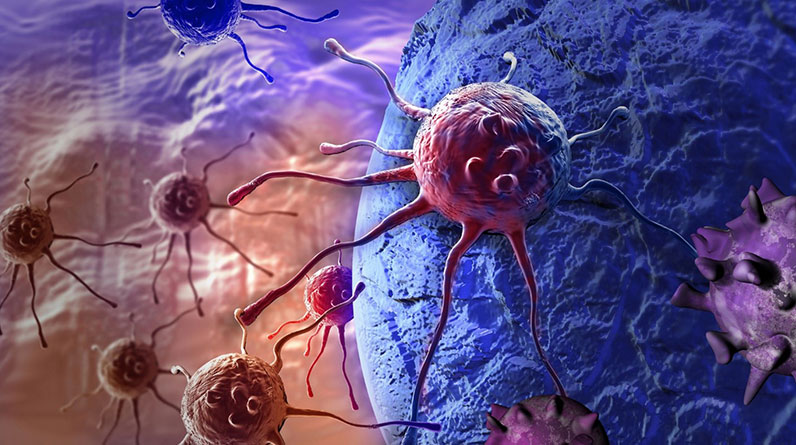
Primary vs Secondary Liver Cancer
Liver cancer, a significant health concern, can be categorized into primary and secondary (metastatic) types. Primary liver cancers, including Hepatocellular Carcinoma (HCC), Intrahepatic Cholangiocarcinoma (ICC), and Hepatoblastoma, originate within the liver cells.
Secondary liver cancer occurs when cancer from other organs, such as the colon, breast, lung, pancreas, or stomach, metastasizes or spreads to the liver.
In what follows, the discussion will include the specifics of primary liver cancers and metastatic liver cancer, highlighting their distinct characteristics and the importance of specific treatment approaches.
Primary Liver Cancer Types
Primary liver cancer refers to cancers that originate in the liver itself. Among these, Hepatocellular Carcinoma (HCC), Intrahepatic Cholangiocarcinoma (ICC), and Hepatoblastoma are the most notable types, each with distinct origins, risk factors, signs and symptoms.
Hepatocellular Carcinoma
Hepatocellular Carcinoma (HCC) is the most common type of primary liver cancer, accounting for about 75-85% of cases. It originates from hepatocytes, the main type of liver cell, and often arises in the context of chronic liver disease.
Prolonged inflammation and damage from chronic infection, commonly due to chronic hepatitis B or C, and cirrhosis from any cause (including alcohol abuse and non-alcoholic fatty liver disease are two main conditions that increase the risk of hepatocellular carcinoma. Other conditions that significantly increase the risk of developing HCC include aflatoxin exposure, which is exposure to certain types of fungi, and specific genetic disorders such as hemochromatosis and Wilson’s disease.
Signs and symptoms of HCC include unintended weight loss, loss of appetite, upper abdominal pain or discomfort, jaundice (yellowing of the skin and eyes), ascites (fluid accumulation in the abdomen), fatigue, nausea, and an enlarged liver or spleen.
Intrahepatic Cholangiocarcinoma
Intrahepatic Cholangiocarcinoma (ICC) represents about 10-15% of primary liver cancers and originates in the bile ducts within the liver. Risk factors for ICC include chronic liver diseases (such as Hepatitis B and C), primary sclerosing cholangitis (PSC), bile duct stones, liver fluke infections, exposure to certain chemicals, and genetic predispositions.
Signs and symptoms of ICC often involve jaundice due to bile duct obstruction, abdominal pain (especially in the upper right quadrant), weight loss, reduced appetite, fatigue, pale stools, dark urine, and occasionally, fever and night sweats.
Hepatoblastoma
Hepatoblastoma is a rare liver cancer that primarily affects children, typically those under the age of three. This cancer originates from immature liver cells and is the most common liver cancer in pediatric populations.
Risk factors for hepatoblastoma include genetic conditions such as familial adenomatous polyposis (FAP) and Beckwith-Wiedemann syndrome, low birth weight, premature birth, and other inherited syndromes.
Signs and symptoms include a noticeable lump or swelling in the child’s abdomen, weight loss, failure to gain weight appropriately, loss of appetite, feeling full quickly, abdominal pain, nausea, jaundice in advanced cases, and sometimes fever.
Secondary Liver Cancer Types
Secondary liver cancer, also known as metastatic liver cancer, occurs when cancer from another part of the body spreads to the liver. The liver is a common site for metastases due to its rich blood supply and the extensive network of blood vessels that filter blood from the rest of the body. This section explores the origins, risk factors, and symptoms associated with metastatic liver cancer.
Metastatic liver cancer originates from primary cancers located in other organs, with the cancer cells from those affected organs traveling through the bloodstream or lymphatic system to the liver. Common primary sites that often metastasize to the liver include the colon, rectum, breast, lung, pancreas, and stomach. Colorectal cancer is particularly noted for its high propensity to spread to the liver, given the anatomical and vascular connections between the intestines and the liver.
The risk factors for metastatic liver cancer are primarily related to the risk factors for the primary cancers that spread to the liver.
These include:
- Colorectal Cancer: Risk factors include a diet high in processed meats, low fiber intake, obesity, smoking, heavy alcohol use, family history of colorectal cancer, and certain genetic mutations such as those found in Lynch syndrome and familial adenomatous polyposis.
- Breast Cancer: Risk factors include older age, family history, genetic mutations (BRCA1 and BRCA2), hormonal factors, and certain lifestyle factors such as alcohol consumption and obesity.
- Lung Cancer: Risk factors include smoking, exposure to secondhand smoke, radon exposure, occupational exposure to carcinogens, and a family history of lung cancer.
- Pancreatic Cancer: Risk factors include smoking, chronic pancreatitis, diabetes, family history, and specific genetic syndromes.
- Stomach Cancer: Risk factors include infection with Helicobacter pylori, a diet high in salty and smoked foods, smoking, family history, and certain genetic conditions.
The symptoms of metastatic liver cancer can be non-specific and often overlap with symptoms of other liver conditions.
They may include:
- Abdominal Pain and Swelling: Discomfort or pain in the upper right quadrant of the abdomen, often due to an enlarged liver (hepatomegaly).
- Weight Loss and Loss of Appetite: Unintentional weight loss and a feeling of fullness after eating small amounts of food.
- Fatigue and Weakness: Generalized tiredness and reduced energy levels.
- Jaundice: Yellowing of the skin and eyes due to elevated bilirubin levels in the blood, indicating liver dysfunction.
- Nausea and Vomiting: Digestive disturbances that can be a consequence of liver impairment.
- Ascites: Accumulation of fluid in the abdomen, causing swelling and discomfort.
- Fever and Night Sweats: Less common but can occur due to the body’s response to cancer.
Liver cancer can manifest as primary or secondary (metastatic) cancer. Understanding the types is important to assist in early detection and effective management.
Treatment options vary depending on the type and stage of liver cancer but generally include a combination of surgery, radiation therapy, chemotherapy, targeted therapy, and immunotherapy. Treatment of primary liver cancers like HCC can include surgical resection, liver transplantation, and localized treatments, such as radiofrequency ablation.
In cases of metastatic liver cancer, treatment focuses on managing the primary cancer and its spread to the liver, often involving systemic chemotherapy and targeted therapies to control tumor growth and improve quality of life.
Early detection, understanding individual risk factors, and choosing appropriate treatment strategies are essential in managing liver cancer and improving patient outcomes.

